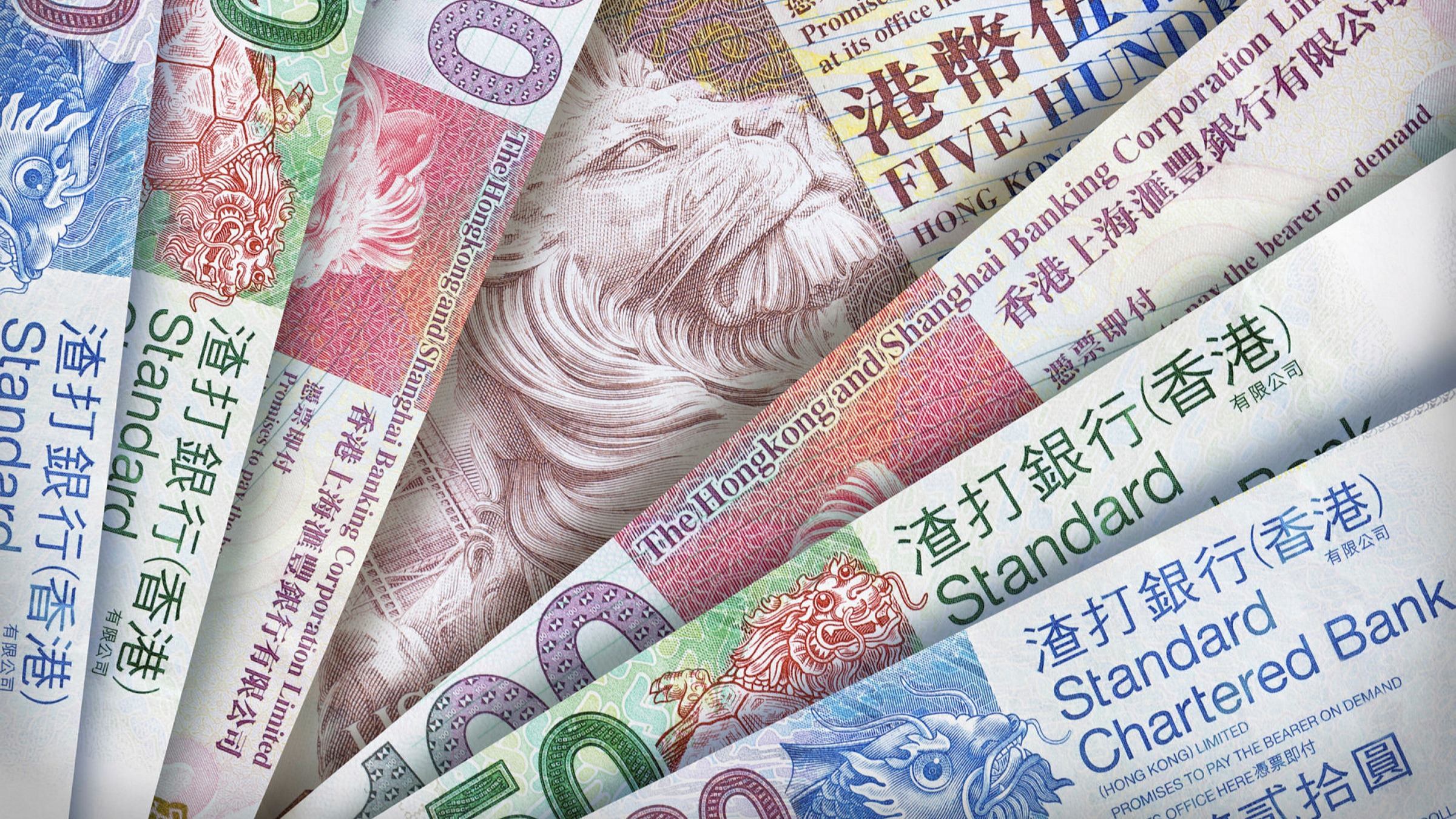HKMA's US Dollar Intervention: Implications For The Hong Kong Dollar Peg

Table of Contents
The Mechanics of the Hong Kong Dollar Peg and HKMA Intervention
The Hong Kong dollar operates under a linked exchange rate system, maintaining a narrow band against the US dollar, typically between 7.75 and 7.85 HKD per USD. The HKMA is responsible for ensuring the exchange rate remains within this band. To achieve this, the HKMA utilizes a range of intervention tools, primarily buying or selling US dollars in the foreign exchange market. When the Hong Kong dollar weakens towards the upper limit of the band (7.85 HKD/USD), the HKMA buys US dollars, increasing the demand for USD and supporting the HKD. Conversely, when the HKD strengthens towards the lower limit (7.75 HKD/USD), the HKMA sells US dollars, increasing the supply of USD and weakening the HKD.
- Buying and Selling Mechanism: The HKMA's interventions are executed through commercial banks, influencing the overall supply and demand dynamics in the foreign exchange market. They don't directly control the exchange rate but rather manage its fluctuations within the defined band.
- Examples of Past Interventions: The HKMA's interventions are often significant, especially during periods of market volatility. For example, during the Asian Financial Crisis of 1997-98, the HKMA defended the peg aggressively, spending billions of US dollars to maintain stability. Specific details of recent interventions are often not publicly disclosed immediately to avoid market manipulation but are usually reported later in official statements.
- Limitations of Intervention Tools: While effective, HKMA interventions are not without limitations. Very large, sustained capital flows – either inflow or outflow – can put pressure on the system. The amount of foreign reserves the HKMA holds, although substantial, is not limitless.
Recent US Dollar Interventions by the HKMA and Their Context
The HKMA has engaged in several significant US dollar interventions in recent years. The frequency and scale of these interventions are often influenced by a variety of factors, including:
-
Capital Flows: Large inflows or outflows of capital can exert significant pressure on the Hong Kong dollar's exchange rate, necessitating HKMA intervention to maintain the peg.
-
US Interest Rate Changes: Changes in US interest rates can impact capital flows into and out of Hong Kong, influencing the exchange rate and potentially requiring HKMA intervention.
-
Geopolitical Events: Global political instability or economic uncertainty can lead to capital flight and pressure on the HKD, prompting the HKMA to intervene.
-
Specific Examples: While precise details are often confidential for a period of time, HKMA releases aggregated data of intervention activity periodically. These releases are typically accompanied by statements explaining the rationale behind the interventions. Analyzing these reports allows for a better understanding of the current economic climate and its impact on the peg.
-
Market Reaction: Market reaction to HKMA interventions generally depends on the scale and timing of the intervention, as well as the broader economic context. Typically, the market interprets intervention as a commitment to maintain the peg, offering some reassurance to investors. However, significant or frequent interventions might raise concerns about the long-term sustainability of the peg.
-
Broader Economic Trends: The interventions are often directly related to global economic fluctuations, such as the impact of the US-China trade war, or global recessionary fears.
Impact on Interest Rates and Monetary Policy in Hong Kong
HKMA interventions have a direct impact on Hong Kong's interest rate environment. The HKMA's actions influence liquidity in the banking system. When the HKMA buys US dollars, it removes Hong Kong dollars from circulation, potentially tightening liquidity and pushing interest rates upward. Conversely, when selling US dollars, it injects Hong Kong dollars into the system, easing liquidity and potentially lowering interest rates.
- US Federal Funds Rate and Hong Kong Rates: Historically, Hong Kong's interest rates have closely tracked the US Federal Funds rate. HKMA interventions help maintain this correlation, although some divergence can occur due to differing domestic economic conditions.
- Consequences of Divergence: A significant divergence between US and Hong Kong interest rates can create arbitrage opportunities and pressure on the exchange rate, potentially requiring greater HKMA intervention.
- Effect on Hong Kong Banking Sector Profitability: Changes in interest rates resulting from HKMA interventions directly influence the profitability of Hong Kong's banking sector, impacting lending margins and overall financial health.
Long-Term Implications for the Hong Kong Dollar Peg's Sustainability
The long-term sustainability of the Hong Kong dollar peg is subject to various challenges. These include:
-
Large Capital Outflows: Sustained and significant capital outflows can put immense pressure on the peg, potentially requiring substantial HKMA intervention.
-
Significant US Dollar Appreciation: A sharp appreciation of the US dollar can make maintaining the peg increasingly costly for the HKMA.
-
Risks of a Sudden Shift: While unlikely, a sudden shift away from the peg would have severe consequences for Hong Kong's economy, including increased exchange rate volatility and potential financial instability.
-
Economic Consequences of Abandoning the Peg: Abandoning the peg would likely lead to increased uncertainty and volatility, potentially impacting investment, trade, and economic growth.
-
Potential Reforms: To strengthen the peg's resilience, various reforms could be considered, including adjustments to the intervention mechanism or exploring alternative tools for managing the exchange rate. However, these measures are often complex and may carry their own risks and consequences.
Conclusion: Assessing the Future of HKMA's US Dollar Intervention and the Hong Kong Dollar Peg
HKMA's US dollar interventions play a vital role in maintaining the Hong Kong dollar peg, a crucial element of Hong Kong's economic stability. Recent interventions have highlighted the challenges of managing the peg in a dynamic global economic environment, influenced by factors such as capital flows, US interest rate changes, and geopolitical events. The sustainability of the peg depends on the HKMA's ability to effectively manage these challenges while balancing the costs and benefits of maintaining the current arrangement. While alternatives exist, the current system has proven robust over many years. The future direction of HKMA policy will likely involve careful monitoring of market conditions and a continued commitment to maintaining the peg. Stay updated on the latest developments in HKMA's US dollar interventions and their effect on the Hong Kong dollar peg by following reputable financial news sources and the HKMA's official publications.

Featured Posts
-
 Bradley Cooper And Will Arnett Behind The Scenes Photos From Is This Thing On Nyc Shoot
May 04, 2025
Bradley Cooper And Will Arnett Behind The Scenes Photos From Is This Thing On Nyc Shoot
May 04, 2025 -
 Myke Wright Lizzos Partner Career Net Worth And Relationship Insights
May 04, 2025
Myke Wright Lizzos Partner Career Net Worth And Relationship Insights
May 04, 2025 -
 Scotlands Coastal Revival A Focus On Seagrass Restoration Bids
May 04, 2025
Scotlands Coastal Revival A Focus On Seagrass Restoration Bids
May 04, 2025 -
 Blake Lively And Anna Kendrick Shine At Another Simple Favor Event
May 04, 2025
Blake Lively And Anna Kendrick Shine At Another Simple Favor Event
May 04, 2025 -
 Tioga Downs 2025 Racing Season What To Expect
May 04, 2025
Tioga Downs 2025 Racing Season What To Expect
May 04, 2025
